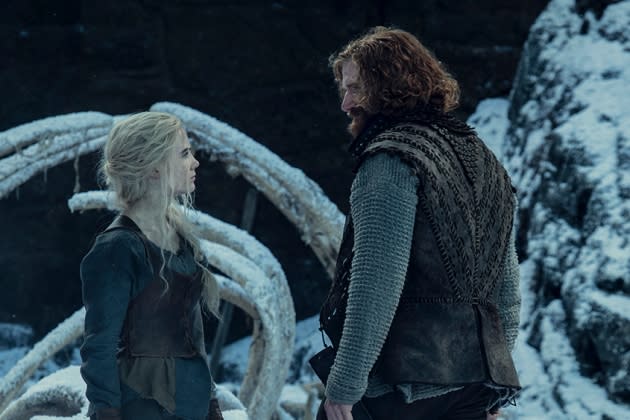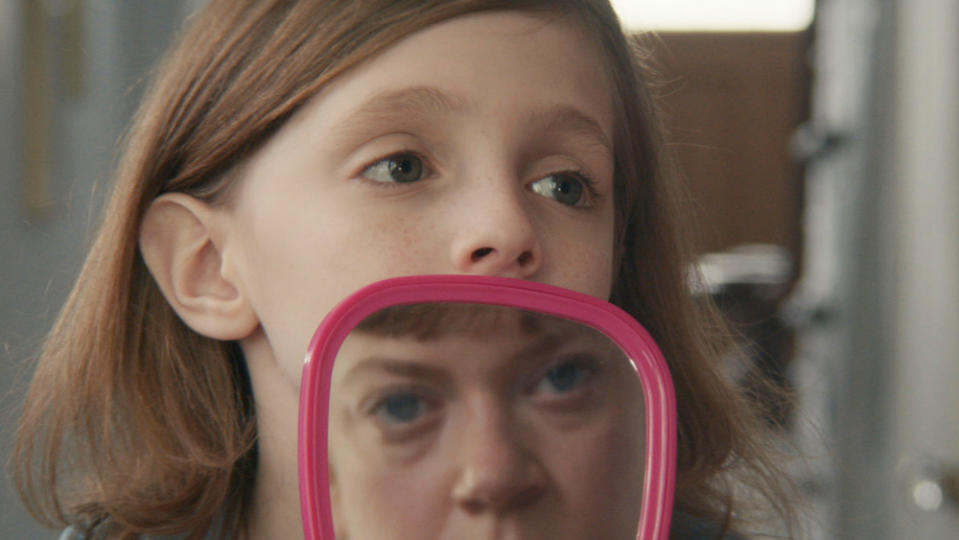‘The Witcher’ Proves Magical Showcase for Poland’s Rising Post-Production and VFX Industry
- Oops!Something went wrong.Please try again later.
- Oops!Something went wrong.Please try again later.

It was as early as 2010, as he likes to tell it, when Polish animator and visual artist Tomasz Bagiński lobbied his friend Andrzej Sapkowski to make a movie. Sapkowski is the author of “The Witcher” series of fantasy novels, and Bagiński — already Oscar-nominated for his short film “The Cathedral” — had dreams of taking the series to the big screen.
Among the project’s early boosters was Platige Image, the Polish animation, VFX and post-production studio that Bagiński joined in 2004. When Netflix swooped in to acquire the rights to “The Witcher” in 2017, the company was tapped to executive produce alongside L.A.-based Hivemind. The Polish studio also became one of several houses to handle special effects for the series, earning an Emmy nomination for its VFX work on what has gone on to become one of Netflix’s biggest international hits.
More from Variety
Netflix Partners With Ubisoft on 'Assassin's Creed' Mobile Game and Two Other Mobile Titles
Kate del Castillo Takes Flight Again With 'La Reina del Sur,' Tolstoy and Tequila
“The Witcher” has proven to be not only a feather in the cap for Platige Image, but for a fast-rising Polish VFX and post-production industry. Studios in the Eastern European country are riding the growing demand for remote post-production and VFX work sparked by the pandemic, amid a surge in production worldwide as companies race to make up for time lost to COVID-19.
“There is more volume, for sure. It’s really visible,” says Platige Image CEO Karol Żbikowski. “The market is really hot right now.”
The biggest game-changer for the Polish industry has been a boom in domestic production driven by Netflix and other streaming services. Earlier this year the Los Gatos-based streaming giant announced a slate of 18 original Polish feature films and TV series and will be unveiling its new headquarters for Central and Eastern Europe in Warsaw later this year.
“When Netflix came to Poland, they forced people to get new knowledge,” says Kamil Rutkowski, CEO of Warsaw-based post-production house Black Photon. The streamer set a high benchmark for technical standards on its productions and, in order to meet those demands, provided free tutorials for local studios while helping them adapt their workflows. “I think Netflix did the most to teach the industry,” says Rutkowski. “Within the last five years, the industry is growing really fast in terms of skills.”
That growth is one of the reasons the Polish Film Institute this year will introduce a $50,000 cash award at U.S. in Progress, an event running alongside Poland’s American Film Festival that presents a selection of roughly half a dozen American indie titles in the final stages of production. This year’s edition takes place in Wrocław, Poland Nov. 9 – 11.
Along with $10,000 in-kind awards from leading Polish post-production companies, the PFI prize will be handed out to one winning filmmaker to be spent on post-production, image, sound and/or VFX in Poland. It’s a step toward “encouraging small and medium-sized independent [foreign] producers to get to know us and see for themselves what we can offer,” according to PFI director Radosław Śmigulski, who pointed to a 30% cash rebate that can be applied to post-production work in the country.
Poland has a rich tradition of cinematography, and local cinematographers — backed by an influential guild — have long pushed the industry to maintain rigorous standards. “They demand quality, and companies need to match it,” says Łukasz Ceranka, a partner at Warsaw’s Fixafilm and the head of its digital restoration department.
The company has restored works by the likes of Orson Welles, Andrzej Wajda and Dario Argento and collaborated with institutions including the British Academy of Film and Television Arts and New York’s Film at Lincoln Center. Ceranka says Fixafilm was also the first post-production house in Poland — and among the first in the world — to adopt the Academy Color Encoding System (ACES), which has since gone onto become the industry standard for managing color during film and television production.
American filmmaker Joe Sackett, whose feature directorial debut, “Homebody,” took home the prize for best first feature this year at Toronto’s Inside Out 2SLGBTQ+ Film Festival, went to Fixafilm for post-production after winning an in-kind award at the U.S. in Progress event in 2020.
“They essentially left the door open for us to let them know what we needed, and without fail provided all those things for us,” he says, including the film’s titles, credits and festival DCP. “When we were in late post-production, I knew that we could go to them for anything, and they would help us out.”

While the pandemic has been a boon for post-production houses around the world, as studios show an increased willingness to do post work remotely, that’s fueled fierce competition for top VFX artists. That competition, in turn, has driven up prices in Poland, whose comparatively low wages and production costs have long been a big selling point, according to Żbikowski.
Though new post-production houses continue to enter the market, capacity is a challenge that threatens to slow the industry’s growth. “We would not be able to do ‘Star Wars’ or ‘Avengers’ in Poland,” admits Rutkowski. “There’s not enough people skilled in character animation.” Many of the top VFX artists in the country, he adds, are instead being swooped up by the booming video game industry.
It’s a problem that requires a radical rethink of how Polish artists are taught and trained. “There is no proper education for talents who want to work solely in the movie post-production industry,” says Alicja Gancarz of leading Warsaw-based studio Orka. Rutkowski recently established the Polish branch of the Society of Motion Picture Engineers, the trade guild that sets standards for industry training worldwide, because he was “looking for knowledge” that he couldn’t find in Poland.
Scaling up is the only logical solution — but that’s easier said than done. “Training VFX artists is a lengthy process. You can’t just fill in the gap so quickly,” says Żbikowski. Along with bolstering its Polish team, Platige Image has opened a studio in Los Angeles and is actively recruiting at industry conferences and events worldwide, with foreign workers making up roughly 10% of its workforce — and growing.
“The biggest challenge is finding the right people, not finding the right projects,” says Żbikowski. He laughs. “It’s a good problem to have.”
Best of Variety
'The Sopranos' Gets the Funko Pop Treatment in New Collectibles Release
From 'The Sandman' to 'Blonde': Books Made Into Movies and TV Series That You Should Read
Jennette McCurdy's Provocative Book 'I'm Glad My Mom Died' Is Already a No. 1 Bestseller
Sign up for Variety’s Newsletter. For the latest news, follow us on Facebook, Twitter, and Instagram.

